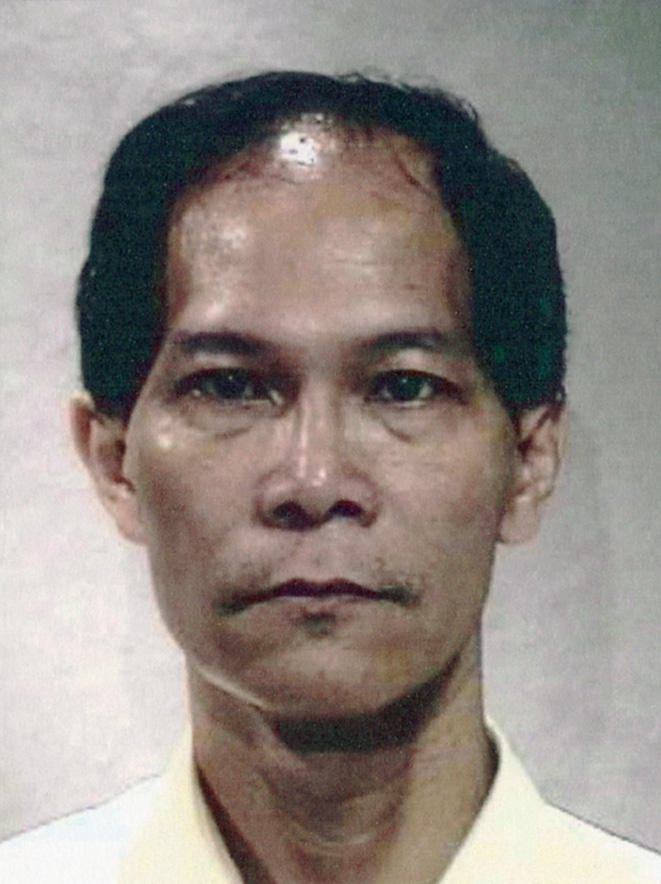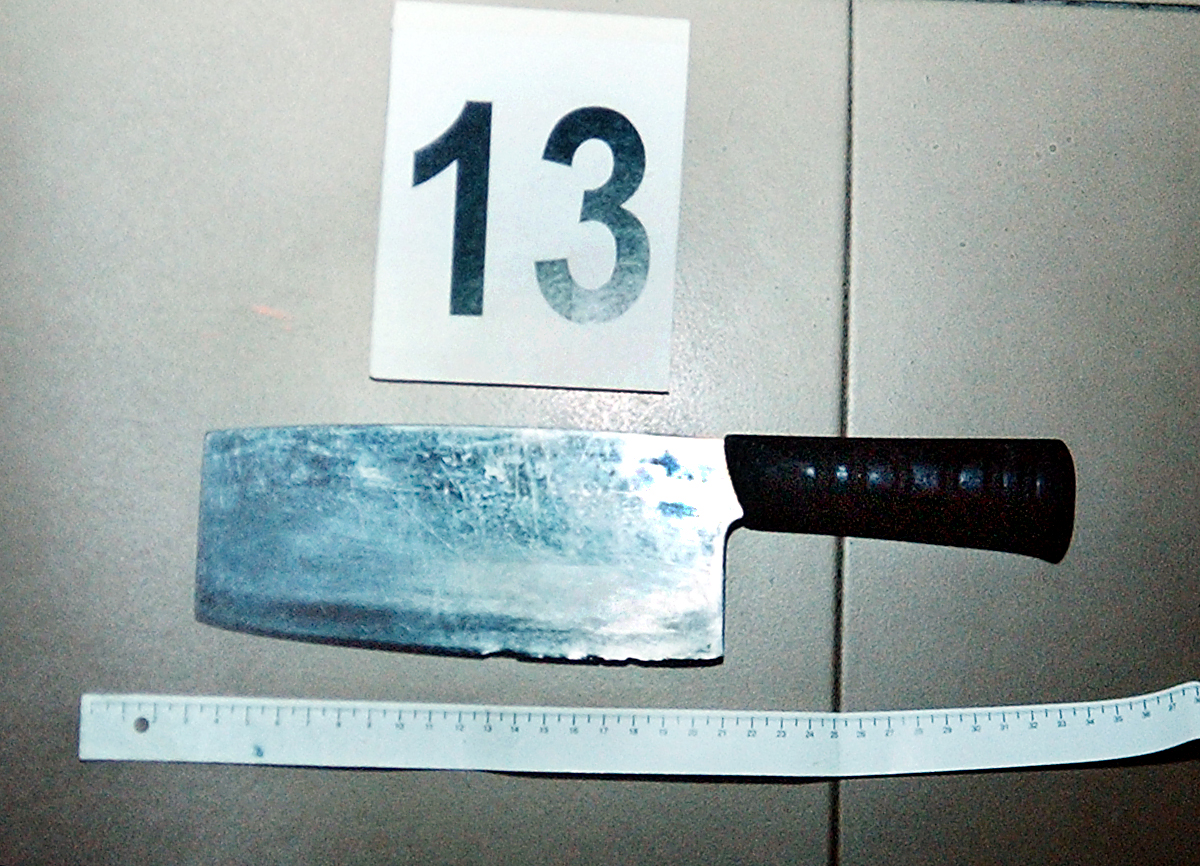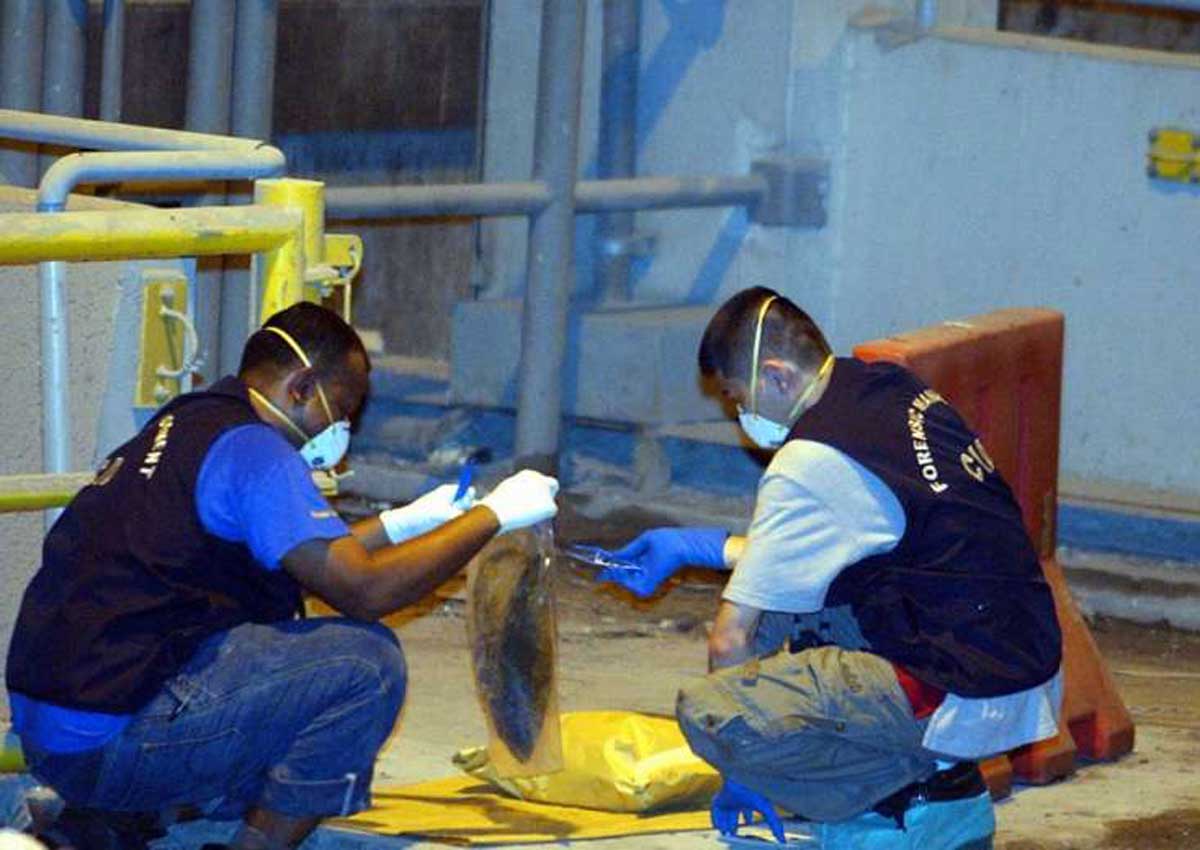This story was first published in July 2015 in an e-book titled Guilty As Charged: 25 Crimes That Have Shaken Singapore Since 1965. A collaboration between The Straits Times and the Singapore Police Force, the e-book appeared in The Straits Times Star E-books app.
Factory supervisor Leong Siew Chor stole his young lover’s ATM card and withdrew money from her account. Then fearing that she would identify him, he killed her and dismembered the body into seven parts.
Leong Siew Chor was 50, married with three children and a supervisor at Agere Systems Singapore, a circuit board company in Serangoon North. Ms Liu Hong Mei was a 22-year-old from China, who worked under Leong as a production operator.
They were lovers, and had been for a year.

Leong Siew Chor, who was married with three children, killed his lover and chopped her body into seven parts. Photo: Police File
But that did not stop Leong from killing Ms Liu – all to prevent police from finding out that he stole her ATM card and withdrew $2,000 from her account.
It was 9.15am on June 16, 2005, and cleaner Murugan Kaniapan was going about his daily rounds when he spotted a waterlogged, brown cardboard box sealed with masking tape on the banks of the Kallang River, a popular spot for sea-sports enthusiasts.
Curious, the 27-year-old tried to pick up the parcel to throw it away but the water damage was too severe.
The box fell apart in his hands, revealing its contents: a green plastic bag containing what looked like fresh meat.
Suspicions aroused, he used a twig to pull apart the loosely-knotted bag. “That was when I saw the lower half of a woman’s body,” he said. Decomposition had not set in and “the flesh looked very fresh, like she was not dead”.
Her naked body had been cleanly severed at the pelvis and knee joints.
Mr Murugan added: “There was no blood and no smell. I could see the bone at the knee was very white.”
Soon after, police found a red and white box 300m downstream on the opposite bank.
In it was another green plastic bag.
It contained the upper torso of a woman’s body. The arms and hands were intact. The decapitated head however was missing.
A massive search was conducted for the other missing parts, including the woman’s feet.
A 30-man battalion of Special Operations police officers scoured the banks and bushes surrounding the river. Police Coast Guard boats patrolled the river up to its opening with the sea.
Two days later, a decomposed head wrapped in newspaper and stuffed into a yellow plastic bag labelled “Artfriend” and legs were found at a Tuas incinerator plant. The bags had been picked up at the Singapore River and brought to the plant by garbage collectors.
By then police already had Leong in custody.
After the first of the shocking finds, police compared fingerprints to a database of foreign workers. Colleagues of Ms Liu, who came to Singapore in 2003 to work, had already lodged a police report that she was missing.
That very night, police went to Agere Systems and questioned Leong, who worked the night shift.
He appeared nervous, according to Acting Inspector Roy Lim – he stammered and his hands trembled.
Leong was arrested the next day.
Police soon pieced together how the gruesome murder happened.
On June 13, the couple had gone to Hotel 81 at Geylang Lorong 20. Leong stole her POSB ATM card from her bag while she was in the shower, after having sex. He used it to make withdrawals and to buy items. He took out most of her savings – over $2,000.
The next day, Ms Liu made a police report about her missing ATM card. That evening, she told Leong about the report and how she was advised that she could look at CCTV footage to see if she could identify the thief.
On June 15, he brought her back to his flat in Block 114, Geylang Lorong 3, then strangled her. Using a chopper and a rubber mallet, he cut her into seven pieces: two feet; two legs above the knee; lower torso; upper torso; and head.
He dumped the parts in different parts of Singapore. He threw her feet and clothes in rubbish bins at Ubi Road, after cycling there.
Her handbag went into a bin outside Ang Mo Kio MRT station on his way to work.
But the parts he had thrown into the Kallang River proved his undoing. They surfaced and drifted to the banks.
The trial next year set the stage for the gory retelling of Leong’s crime. More than 280 photographs of Ms Liu’s body parts were shown, to the horror of the gallery.
It looked like cuts had been made to her private parts. Her upper torso had an open wound on the left shoulder. Her stomach and decomposed organs could be seen.
Masking tape with strands of hair, a chopper and a black rubber mallet were found in Leong’s home. A stack of Chinese newspapers and green plastic bags were also found. Traces of blood were discovered on three pails, on the kitchen toilet wall and on the back of the toilet bowl. Pictures of his 24-year-old son’s room showed several yellow bags with the word “Artfriend”. The sides of a lift in the block also had blood stains.
Leong claimed the couple had decided to commit suicide but he chickened out.
On the morning of June 15, he said, he and his lover had gone to his flat. After hugging and kissing for 20 minutes, she asked him to follow her to China, he claimed.
Leong did not want to – he was too old to start afresh; and could not abandon his wife and three children. He said she suggested that they die together.
She wanted to go first to show her sincerity, he said. Leong then strangled her with a towel. “It was the look on her face that made me decide not to strangle myself,” he said.
On May 19, 2006, Justice Tay Yong Kwang sentenced Leong to death.
He rubbished the claims of a suicide pact, finding that Ms Liu, “a lively, young woman in the vernal stage of her life”, who was doing well in her job, was keen to forward her studies, and looking forward to attending her sister’s wedding, had no reason to want to end her life.
“In the classic tragic tale of ill-fated love, the luckless lover committed suicide. Here, Romeo killed Juliet. It was a most disgusting and despicable murder. Liu Hong Mei died a very cruel, heartbreaking death.”
Afraid that Ms Liu would point him out as the person who stole her ATM card after watching CCTV footage, possibly costing him his job and family’s respect, Leong had decided “to silence her forever and save himself”.
“The accused stole the deceased’s heart, then pilfered her card and hard-earned savings, and finally robbed her of her life.”
In September that year, his appeal was rejected by a three-judge panel.
Justice V.K. Rajah again rejected the claims of a suicide pact. “If he could not bear to leave his family, why would he want to take his life away?”
Justice Choo Han Teck added: “Which man who claims to love a woman so much that he follows her to her death would steal her ATM card and money?”
After his clemency appeal was rejected, he was hanged on Nov 30, 2007
HOW HE KILLED AND CHOPPED HER UP

Photo: The New Paper
Leong first brought Ms Liu to his flat and then strangled her. using a towel.
Using a chopper and a rubber mallet, he cut her into seven pieces: her two feet; two legs above the knee; lower torso; upper torso; and head.
STRANGERS AT HER FUNERAL

Ms Liu’s coffin was covered by 260 crimson roses. Undertaker Roland Tay (third from the left) organised the funeral for free. Photo: The Straits Times
Ms Liu Hong Mei’s funeral on July 11, 2005, was attended by 150 people – from well wishers to curious gawkers. Many said they were sorry for the victim. Undertaker Roland Tay and his wife Sally Ho led the ceremony.
Ms Liu’s sister Hong Wei could not bear to attend, and had her own personal difficulties.
Mr Tay, who collected more that $20,000 in donations, said he would hand the money to the sister. He was also told to take Ms Liu’s ashes back to her family in Chang Chun village in China.
An 80-year-old retiree who turned up for the funeral commented: “Some of those here look as if they are here to see a show.” Chinese newspapers reported that some who came hoped to find lucky lottery numbers. Ms Liu, whose coffin was filled with her favourite toys, books and clothes, was cremated in Mandai that day.

This article was first published on May 17, 2016.
Get a copy of The Straits Times or go to straitstimes.com for more stories.






